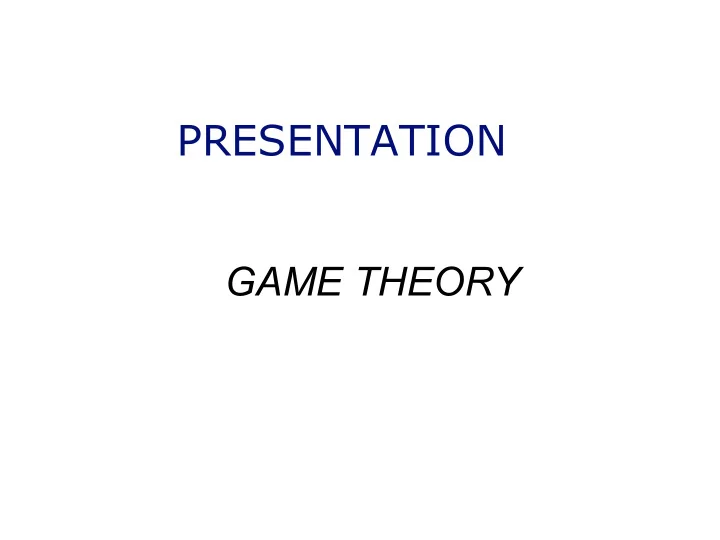

PRESENTATION GAME THEORY
Goals n In this course we will introduce some basic ideas about Game Theory as well as different types of games. n We will study the main equilibrium concepts (Nash, subgame perfect and Bayesian equilibria). n The theory will be illustrated with economic applications: non competitive markets, political competition, bilateral negotiations, auctions, voting systems and market cooperation. 2
Program Three parts n Static Games 1) 4 weeks q Dynamic Games 2) 5 weeks q Repeated and Bayesian Games 3) 4 weeks q
Evaluation I n In the “convocatoria ordinaria” (January) the final grade is based on a final exam (60%). The remaining 40% of the grade is allocated based on class performance. n Class Grade: 40%, of which q 50% quizzes q Two quizzes q A quiz consists of several questions and problems from the exercise list q 25% Exercises (public class presentation) q 25% Magistral class participation q Class grade = 0.25(quiz 1) + 0.25(quiz 2) + 0.25(Exercises) + 0.25(magistral class)
Evaluation II n Final exam grade q The exam will be common to all groups. q In “convocatorias extraordinarias” the grade is the maximum between the grade computed with the formula for the “convocatoria ordinaria” and the grade of the final exam.
Evaluation III n During the reduced class, 4 or 5 students will be randomly chosen within the class list to present publicly the solution of one problem each. n In each class any student can be chosen regardless of how many times they have already presented. n The random process will guarantee that each student will be chosen 2 or 3 times (depending on the group). 6
Evaluation IV n In approximately half (randomly chosen) of the magistral classes, the professor will keep the last 10 minutes to ask a few questions that should be answered in writing. n These questions will be used to evaluate the participation in the magistral class. 7
Practical Aspects I n Reduced classes will be used to work on the exercises lists. All theoretical questions will be addressed in the magistral class and during office hours. n The final exam will include questions related to the material covered in the magistral class. n Each class in reduced groups is the continuation of a magistral. n Some course material will be posted on line.
Practical Aspects II n Problem Sets: web page and aula global http://www.eco.uc3m.es/docencia/new_ju egos/en_home.html n Office hours
Practical Aspects III n BASIC REFERENCES: q GARDNER, R. Games for Business and Economics. Wiley, 2003. q GIBBONS, R. A Primer in Game Theory. Pearson, 1992. n COMPLEMENTARY REFERENCES: q BINMORE, K. Fun and Games. McGraw-Hill, 1994. q DIXIT, A y NALEBUFF, B. Thinking strategically. Norton, 1991 q VEGA, F. Game Theory and Economic Applications. Cambridge University Press, 2001.
Recommend
More recommend